Agriculture is the main economic driver within the Gannawarra Shire with a value of around $284M per annum and employing around 1058 people. Gannawarra Shire has a diverse agricultural economy comprised of dairy, cereal and legume cropping, livestock including beef, lamb and pork, viticulture and horticulture comprising walnuts, olives, tomatoes, apples, peaches and citrus along with small plantings of vegetables and herbs.
A variety of soil types combined with a suitable climate can support a range of enterprises across both irrigated and dryland properties. The shire is split distinctively between the riverine plain to the east and the Mallee to the west.
Irrigation plays an important role in agriculture. Water is supplied from the Murray River and Goulburn River systems via a network of automated channels and natural lakes and creeks. Lake Charm, Kangaroo Lake and the Gunbower Creek are natural assets that play a key role in the distribution of irrigation water from the Murray River.
Irrigation farms have undergone an efficiency transformation with laser grading and re use systems developed for flood irrigation farms. The implementation of subsurface irrigation, centre pivot irrigators, pipes and risers and automation has assisted in further efficiency gains for irrigation farmers.
Crops grown with irrigation include:
• Wheat, barley, canola, cotton, corn, peas, beans, sorghum, vetch and oats
• Tree crops including walnuts, olives, stonefruit, citrus and apples
• Tomatoes, onions, broccoli and pumpkin
• Wine grapes
• Hay including oaten, vetch, lucerne, clover and pasture
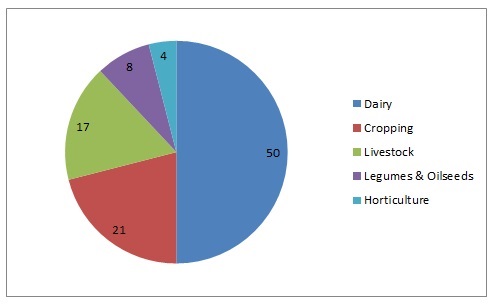
Go Farm is a major landholder and producer within the Gannawarra shire. Go Farm are utilising underperforming land for a number of agricultural enterprises including tomatoes and organic wheat.
Stonefruit
Bio dynamic peaches are grown on the western lunettes of Kangaroo Lake. Loamy soils, sunshine and access to quality irrigation water produce a quality product that is in high demand. Bio dynamic production produces fruit free from many of the pesticides and artificial fertilisers common in other farming practices. This type of farming is gaining popularity as consumers want food produced with the environment in mind.
A new stonefruit development has been undertaken at Lake Charm, located north of Kerang, comprising 60ha of plums. This is a new variety “Queen Garnet” and the rootstock is limited to ensure the variety don’t suffer from market over-supply. Further plantings of this variety are expected in the future.

Viticulture
The viticulture industry in the Gannawarra Shire is centred around Kangaroo Lake and Lake Charm, where the main growers Brown Brothers and the Dent family have around 1,000 acres of wine grapes planted.
Browns first established their vineyards at Kangaroo Lake in the early 1960s after severe frosts wiped out crops in their Milawa vineyards. A move to a warmer climate and beside Kangaroo Lake was to minimise frost losses.
The Lake Charm vineyard is one of the first to be developed using sub surface irrigation. The benefits being reduced water losses, reduced weed growth and improved water control.
The main varieties grown include Cienna, Dolcetto, Tarrango, Orange Muscat, Flora, Crouchen, Shirax, Chardonnay, Vermentino, Muscat Gordon Blanco, Chenin Blanc.
Cienna is a variety developed by the CSIRO and Browns and grown specifically in this area. It is a low alcohol, sweet red variety.
There are opportunities for further wine grape plantings and Councils Economic Development staff can facilitate this process and advise on soils, water and infrastructure.

Walnuts
Walnuts like a warm climate, irrigation and free draining soils and grow very well in the warm Mediterranean climate along the Murray River near Koondrook. Modern walnut varieties have now reduced the growing time for commercial production with trees capable of producing in around 3-4 years. The trees are machine harvested with the crop being sold locally and via a grower cooperative.
Olives
Small plantings of olives at Cohuna and Kangaroo Lake produce quality oils that are sold locally. Olives are susceptible to water logging and like a free draining soil, hot summers and irrigation water for maximum production. Aldens Olive Oil at Cohuna produce quality oils that are available for sale locally and make a great souvenir gift.
Apples
Apples can be grown on heavier soils and an organic orchard at Tragowel, located south of Kerang, is well established and producing good quality fruit for the metropolitan market. Varieties grown include Pink Lady, Royal Gala, Sundowner, Lady William and Granny Smith. Bio Dynamic Apples are also grown at Kangaroo Lake.
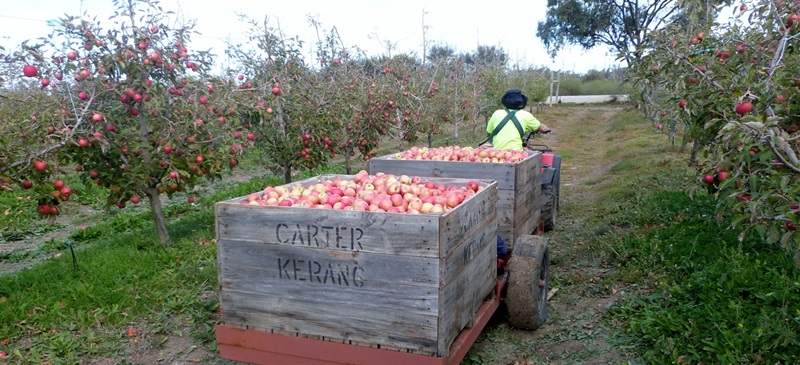
Citrus
The citrus industry within the Shire is situated along the Murray River at Murrabit and Koondrook. A processing facility is located in Koondrook and is used for fresh juice production. Oranges are the main crop variety along with small planting of grapefruit. Opportunities exist for further industry development.
Vegetables
Vegetable production in the Gannawarra Shire is relatively small in area but large in opportunity. Vegetables such as cabbage, cauliflower and broccoli are brassica crops well suited to the soils and climate and grown in small numbers depending on market prices. Herbs, onions, pumpkins and melons are also grown as opportunistic crops and as vegetable seed crops.
Local properties have been identified that would be suited to large scale vegetable growing, with secure water supplies, 3 phase power and good transport access.
Tomatoes
Processing tomatoes are grown, southwest of Kerang and further north around Kangaroo Lake. It is the first organic crop of field processing tomatoes grown in Australia. Go Farm produce around 70 000 tones of tomatoes which is about 1/3 of the process volume in Australia. Sub surface irrigation on raised beds has increased production yields for growing processing tomatoes with crops producing around 100 tonnes per ha. The fruit is machine harvested in the summer months and placed into large steel bins for transportation to the Kagome factory in Echuca for processing.
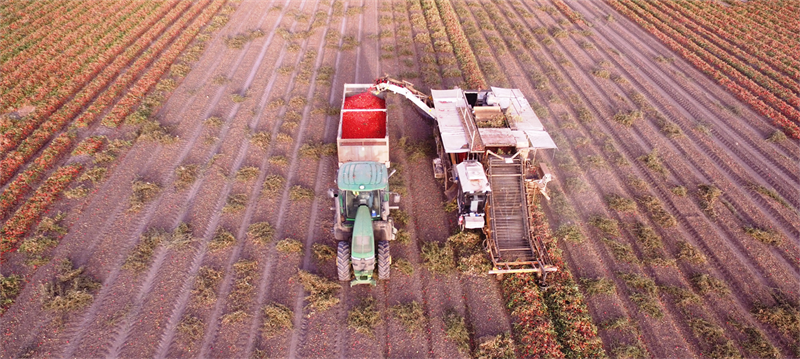
Corn & Maize
Corn crops are grown for stockfeed and are a very vigorous summer crop. Crops are grown on flood irrigation and on sub surface irrigation and are well suited to the local soil types. Corn can grow to around 2 metres in height and is harvested once the head of the plant has dried.
Cotton
Cotton was first grown north of Kerang in 2014. Cotton is usually grown further north in New South Wales but improved farming techniques and new varieties has seen cotton grown in Victoria – a first for many years! As the yields and growing methods improve it is likely that more cotton will be grown in the local area and this is likely to lead to value adding opportunities.

Cereal and oilseed cropping is widespread across the Gannawarra Shire. Wheat, barley and canola are the most popular crops and they are grown primarily in the western Mallee portion of the Shire from Lake Meran through to Quambatook and Lalbert. Broadacre cropping is highly mechanised with large air seeders, tractors and harvesters allowing farmers to cover large areas of land. Many of the cereal farms in the Mallee can be up to 12,000 acres or larger.
The Mallee soils suited to cropping feature loamy shallow topsoils over heavier clay loams with crops relying on annual rainfall to carry them through to harvest in December. Irrigated cereal cropping is undertaken in most of the irrigation areas across the Shire for both stockfeed and for grain production. Other broadacre crops include oats, peas, beans and vetch.
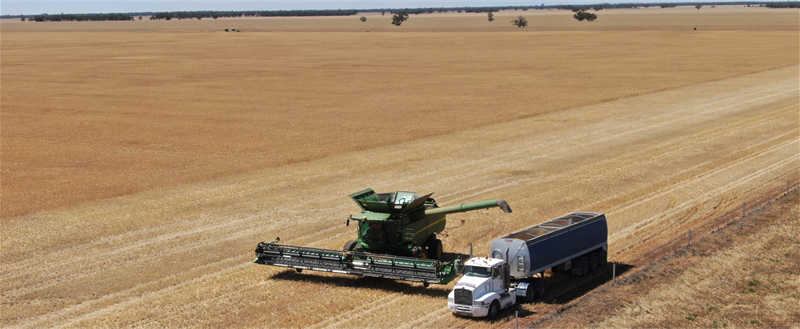
Livestock production accounts for around 17% of agricultural activity and includes pigs, sheep, cattle, goats, buffalo, emu and deer.
Several large piggeries have been developed in the Macorna area, located south of Kerang, and these highly intensive facilities can accommodate large numbers of pigs. There are many piggeries right across the municipality from Leitchville to Quambatook in the Mallee.
Sheep and cattle are popular in mixed irrigation farms and in broad acre grain farms for meat production. English cattle breeds such as Angus and Hereford and are most popular. Merino sheep are widely used for wool production while meat breeds include Dorset, Border Leicesters and Dorper.
Livestock numbers will fluctuate depending on farm gate prices and the availability of irrigation water and feed.
Council is very keen to promote further activities in the livestock sector and can facilitate aggregated land suitable for large scale feed lotting and abattoirs and large scale dairy farm linked to milk processing. Talk to us about the opportunities.
Hay crops provide an additional source of feed for the livestock industry in particular dairy. The main hay crops include oaten hay, lucerne, clover and vetch. The hay is pressed into large square or round bales with much of the crop being trucked to other areas within Victoria for livestock feed. Hay crops are produced under irrigation and on dry land properties.
The Kerang area is ideally suited to export feed production and council can assist in all facets of this development.
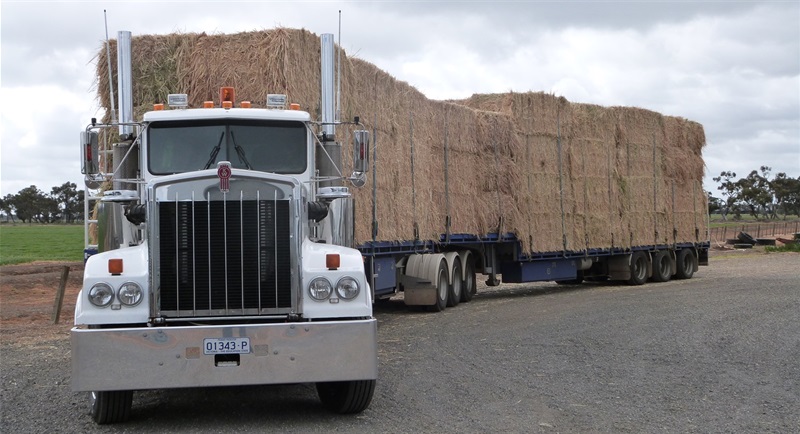
Dairying in the Gannawarra is focused primarily in the Cohuna, Leitchville and Koondrook areas along with farms in Kerang, Murrabit and Macorna.
The dairy industry has undergone significant change since industry deregulation in 2000, with farms becoming larger and farmers implementing many new initiatives to boost production and reduce costs. New irrigation practices, supplementary feeds, closer monitoring of cow production and competition from major dairy companies have influenced dairy farming practices.
The average herd size is around 260 cows with an estimated 60,000 cows currently being farmed within the Shire.
Industry forecasts for the dairy industry are confident due to anticipated gains from international trade reforms and continued demand from Asian markets. Strong competition in these markets will be maintained which will encourage farmers and processors to continue to achieve productivity gains.
The majority of bulk milk production in Victoria has concentrated on producing bulk commodities (cheese, butter, milk powder) predominately for the export market. In the medium term, processors are likely to match production to products tailored to meet the specific needs of end-users in export markets for countries such as Japan, China and Singapore.
Victoria produces around 70% of Australia’s milk and this trend is expected to grow in the coming years. The number of farms is expected to decline and production increase as farmers produce more milk per cow.
In the Gannawarra Shire the dairy industry will continue to play a major role in the local economy and Council will continue to promote and encourage new opportunities at the farm gate and in medium scale dairy food production.

Irrigation plays a significant role in the production of pasture based feeds with crops such as lucerne, oaten hay, corn and clover. The irrigation system is also crucial to the local cropping, horticulture and viticulture industries.
The irrigation system in the Gannawarra Shire is supplied from the Murray and Goulburn Rivers via a network of natural lakes, creeks and channels. Recent upgrades to the irrigation system have been undertaken to ensure farmers have access to irrigation water and better match on farm demands.
Much of the supply system has been automated and farmers have also upgraded on farm irrigation systems to improve irrigation efficiency. Automated structures, pipes & risers, laser grading re-use systems, centre pivot irrigators and improved technology are all assisting farmers water use efficiency.
Laser grading of irrigation paddocks was pioneered in Cohuna by local irrigation experts and has revolutionised and greatly improved the efficiency of flood irrigation.
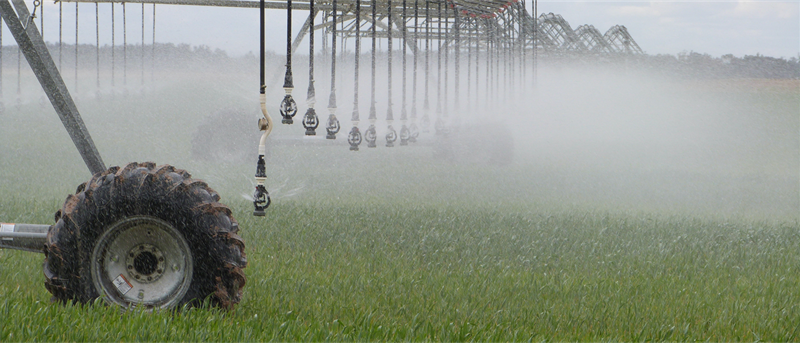
Victorian food and fibre exports were valued at $12.8 billion in 2016–17. The value of food exports alone was $9 billion, an increase of $0.7 billion from the previous financial year.
Victoria's food and fibre exports in 2016–17 increased significantly in value, accompanied by a decline in volume. This is consistent with a shift towards exports of higher-value products.
In 2016–17, Victoria accounted for 25% of Australia's total food and fibre exports and remained Australia's largest state exporter. Victoria has a 24% share of Australia's total food exports and a 29% share of Australia's total fibre products exports.
Victoria's 10 most valuable food and fibre export markets in 2016–17 were China, Japan, USA, New Zealand, India, Indonesia, Hong Kong, Malaysia, Vietnam and South Korea.
There are approximately 135,997 farm businesses in Australia, covering 61% of Australia's landmass. Each Australian farmer produces enough food to feed 600 people, 150 at home and 450 overseas.
Australian farmers produce almost 93 per cent of Australia’s daily domestic food supply. Nationally agriculture can employ around 325,300 people across many different sectors. The complete agricultural supply chain, including the affiliated food and fibre industries, provide over 1.6 million jobs to the Australian economy.
In 2016-17 the gross value of total Australian agricultural production was $63.0 billion, this was a record production. When the vital value-adding processes that food and fibre go through once they leave the farm are added in, along with the value of all the economic activities supporting farm production through farm inputs, agriculture’s contribution to the GDP averages out at around 12 percent (or $155 billion).
Australian farmers export around 77% of what they grow and produce meaning that farm profits are dictated by world pricing and demand.
The Gannawarra Shire has developed an Agribusiness Investment Guide which highlights all of the development areas in agriculture across the Shire. It identifies specific areas based on soil types, infrastructure such as water power and road access, buffer zones for intensive animal industries and the general capability of the area to service new developments.
You might be interested in the following opportunities:
- Large scale beef feedlotting, abattoirs and meat processing
- Large scale dairy feedlotting and dairy processing
- Shallow rooted horticulture such as vegetable and herbs
- Intensive horticulture in green houses
- Stonefruit, wine grapes and table grape production
- Grain and hay processing for the livestock feed industry
Council's Economic Development team can assist you with all of your agricultural development needs. We have extensive experience in the irrigation sector and have undertaken horticultural soil sampling across much of the Shire and have identified properties suited to various development opportunities – we are investment ready!
For more information, contact Council's Executive Manager Economic Development, Roger Griffiths on 0417 370 950 or email roger.griffiths@gsc.vic.gov.au
